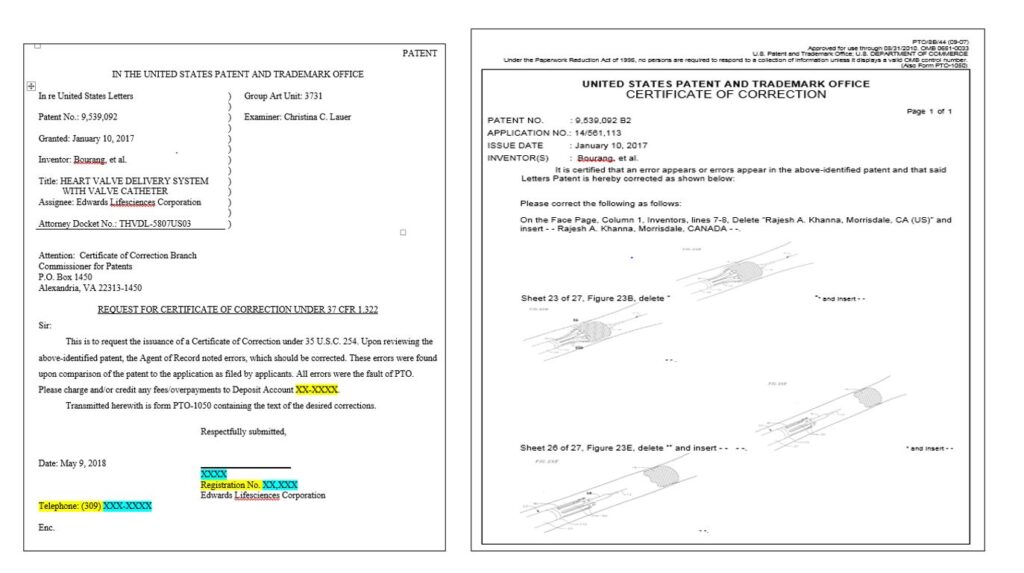Patent proofreading plays a vital role in maintaining the accuracy of legal documentation. Errors in issued patents can cause significant financial and legal setbacks, including delays, unnecessary office actions, and potential invalidation of claims. By implementing a robust proofreading process, companies can avoid these risks and ensure their intellectual property remains protected and legally enforceable. This blog outlines the critical components of patent proofreading and highlights best practices to maintain the highest quality of issued patents.
Why Proofreading Matters in Patent Documentation
A patent is a robust legal tool that gives an inventor exclusive rights over their creation. However, errors—whether made by the applicant or patent examiner—can weaken this protection. Common mistakes include clerical issues, misinterpreted claims, or omissions that can lead to expensive corrections or disputes. Proofreading catches these errors early, allowing for timely rectifications through mechanisms like the Certificate of Correction (CoC), thus safeguarding the patent holder's rights.

Best Practices for Patent Proofreading
Effective patent proofreading demands attention to detail and a clear understanding of the patent’s structure. Following these steps ensures a thorough review:
- Check the Face Page: The face page of a patent contains critical bibliographic information, such as the patent number, filing date, and inventor names. To ensure accuracy, proofreaders must cross-reference this information with corresponding records (like the Issue Notification or Application Data Sheet).
- Review the Specification and Claims: The specification describes the invention in detail. Proofreaders should verify that the final patent accurately reflects all prosecution amendments. You must check claims for consistency, particularly regarding antecedent basis and claim dependencies, as these directly impact the scope of protection.
- Examine the Drawings: Drawings visually represent the invention and play a crucial role in the patent. Proofreaders must ensure that the drawings align with the written description and reference them throughout the patent.
- Verify Continuity Data: Proofreaders must confirm that all continuity data, including related applications and priority claims, are correctly listed and traceable. Errors in this section can cause complications during litigation or challenge the patent’s validity.
Overcoming Common Challenges in Patent Proofreading
Proofreaders typically encounter three primary sources of errors:
- Examiner Errors arise from manual transcription of patent claims and descriptions during prosecution. Proofreaders must review examiner amendments to prevent discrepancies in the final issued patent.
- Applicant Errors: These errors usually include typographical mistakes, incorrect formatting, or non-compliance with patent office guidelines. A pre-filing proofreading stage can help detect and correct these issues, reducing the risk of rejections or office actions later in the process.
- Ambiguities in Legal Requirements: Some errors may not violate patent law but still pose risks if not corrected. Proofreaders must identify potential inconsistencies in the legal language and suggest appropriate corrections.
Tools and Techniques for Accurate Proofreading
Proofreading typically involves comparing the final issued patent with its prosecution history, which is often accessible via the Image File Wrapper. Optical Character Recognition (OCR) tools help extract text for a side-by-side comparison while spell-checking and grammar tools catch minor errors that might have been overlooked.
Proofreaders summarize their findings in an Error Reporting Form (ERF), categorizing errors as critical or minor. This form helps the patent owner decide whether a Certificate of Correction is necessary.

Conclusion
Patent proofreading is crucial for maintaining issued patents' accuracy and legal robustness. By following industry best practices and using systematic procedures, companies can save time and resources while protecting their intellectual property. In a competitive marketplace, where intellectual property drives business strategy, proofreading is essential in securing innovations and reducing the risk of costly disputes. Proper proofreading ensures that a patent retains its full legal force, allowing companies to protect and monetize their inventions.
Talk to One of Our Experts
Get in touch today to find out about how Evalueserve can help you improve your processes, making you better, faster and more efficient.


